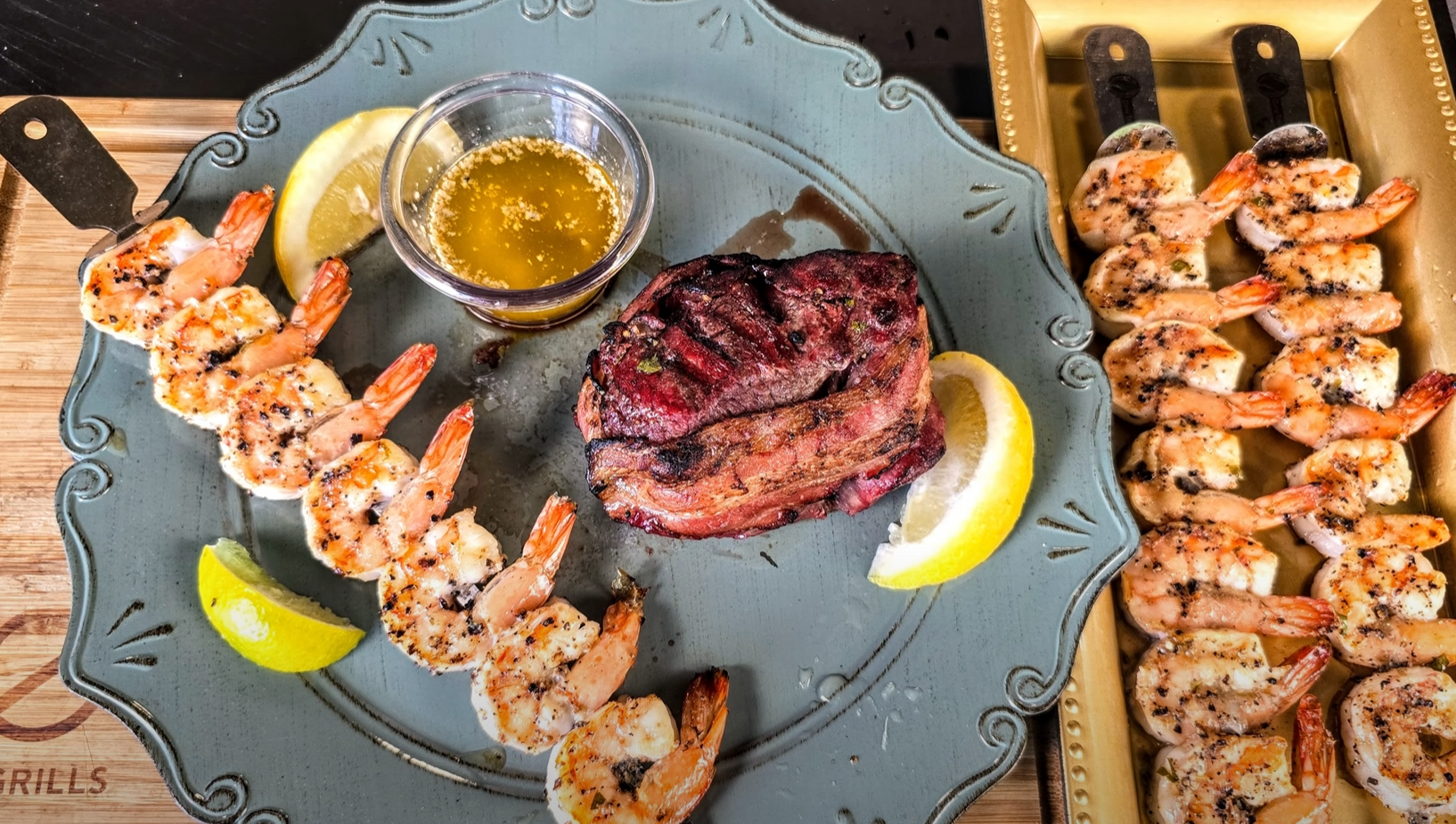If you’re a barbecue enthusiast, you know that achieving the perfect temperature is crucial for smoking meats to tender, juicy perfection. But how can you ensure that your meats are cooked just right? The answer lies in investing in the best meat thermometer for smoking. In this article, we will explore the features, pros, and cons of different types of meat thermometers, discuss why using a meat thermometer is essential, and provide practical tips on choosing, setting up, and caring for your thermometer. So, let’s dive in!
Table of Contents
Why Should I Use a Meat Thermometer for Smoking?
Imagine this: you’re hosting a backyard barbecue with friends and family. You’ve spent hours carefully preparing a mouthwatering brisket, patiently tending to your smoker. As the aroma fills the air, you can’t help but wonder, “Is it ready?” This is where a meat thermometer becomes your trusty companion. By accurately measuring the internal temperature of your meat, a thermometer ensures that it reaches the desired level of doneness, ensuring both safety and optimal flavor. No more guesswork or cutting into your meat to check doneness—your thermometer will be your guiding light.

Different Uses for a Meat Thermometer
A meat thermometer isn’t just a one-trick pony for smoking. It can come in handy in various culinary endeavors. Apart from measuring the internal temperature of smoked meats, you can use a meat thermometer to achieve the perfect doneness for grilled steaks, roast poultry, or even delicate fish fillets. It can also be useful when making sauces, soups, or baking goods like bread or cakes. Whether you’re a seasoned pitmaster or an aspiring home cook, a meat thermometer is an invaluable tool that guarantees consistent results in your kitchen.
Different Types of Meat Thermometers You Can Use for Smoking
When it comes to meat thermometers, you have several options to choose from. Let’s explore the most common types:
Instant-Read Thermometers
If you’re looking for quick and accurate temperature readings, an instant-read thermometer is your go-to option. As the name suggests, these thermometers provide rapid temperature measurements within seconds. You simply insert the probe into the meat, and within moments, you’ll know the internal temperature. Instant-read thermometers are perfect for checking the doneness of your meats towards the end of the smoking process. They are handheld, easy to use, and offer excellent accuracy.

Probe Thermometers
For longer smoking sessions or when you want to monitor multiple cuts of meat simultaneously, a probe thermometer is your best bet. These thermometers consist of a base unit and a probe connected by a wire. The probe is inserted into the meat to measure its internal temperature, while the base unit displays the reading. Some probe thermometers come with multiple probes, allowing you to monitor different cuts of meat or different areas of a large cut. This setup allows you to keep track of the temperature without opening the smoker, minimizing heat loss and ensuring consistent cooking.

Wireless Thermometers
Wireless thermometers take the convenience of probe thermometers to the next level. With wireless capabilities, you can monitor the temperature readings from a distance, providing freedom and flexibility during your smoking sessions. No more constant hovering around the grill—simply carry the receiver with you and keep an eye on the temperature from the comfort of your home. Some advanced wireless thermometers even offer smartphone connectivity, allowing you to receive temperature alerts and updates on your mobile device. It’s like having a personal barbecue assistant in your pocket!

How to Choose the Best Thermometer for Smoking: Factors to Consider
Now that you’re familiar with the different types of meat thermometers available, let’s delve into the key factors to consider when choosing the best thermometer for smoking:
Number of Probes
Consider the number of probes you need based on your smoking needs. If you often smoke multiple cuts of meat or want to monitor the temperature of both the meat and the smoker, opt for a thermometer with multiple probes. This allows you to keep a close eye on different pieces of meat or track the ambient temperature inside your smoker simultaneously.
Accuracy
Accuracy is paramount when it comes to meat thermometers. Look for models that offer high accuracy readings, typically within a few degrees of the actual temperature. This ensures that your meat is cooked to perfection without any risk of undercooking or overcooking.
Temperature Range
Different types of meat require different temperature ranges for optimal cooking. Make sure your thermometer can handle the temperature range required for the meats you love to smoke. Whether you’re smoking delicate fish or slow-cooking a large pork shoulder, your thermometer should be able to accurately measure the temperature throughout the entire cooking process.
Wireless Range
If you opt for a wireless thermometer, consider the range it offers. Ensure that the wireless signal can reach your desired monitoring location. Whether you’re inside your home, mingling with guests, or taking care of other cooking tasks, you want to be able to monitor the temperature from a convenient distance without losing the connection.
Connectivity
Some wireless thermometers offer advanced connectivity features, such as smartphone apps or integration with smart home systems. These features allow you to monitor the temperature remotely, receive notifications, and even track temperature trends over time. Consider whether these additional connectivity features align with your preferences and cooking style.
FAQs About the Best Wireless Smoker Thermometer
Here are answers to some commonly asked questions about wireless smoker thermometers:
Can you leave a thermometer in the meat while it cooks?
Yes, most meat thermometers are designed to be left in the meat while it cooks. However, it’s crucial to ensure that the thermometer is heat-resistant and suitable for prolonged exposure to high temperatures. Always check the manufacturer’s guidelines to ensure the thermometer can withstand the cooking conditions you plan to subject it to.
How To Set Up Your Smoker Thermometer
Setting up your smoker thermometer is a straightforward process. Start by inserting the probes into the meat or the smoker, depending on your monitoring needs. Make sure the probes are securely in place and not touching any bones or the smoker walls, as this can affect the accuracy of the readings. Follow the manufacturer’s instructions for syncing the base unit or receiver with the probes, and you’re ready to start monitoring the temperature.
Where to Run the Probe Wires
When using a probe thermometer, it’s essential to route the probe wires in a way that avoids damage and interference. Ensure that the wires are away from direct heat sources, flames, or hot surfaces to prevent melting or burning. Use wire clips or routing holes if provided by the thermometer manufacturer to keep the wires organized and out of the way.
Choosing Where to Insert Meat Thermometer Probes
When inserting meat thermometer probes, choose the thickest part of the meat away from any bones or fat. The thickest part will give you the most accurate representation of the meat’s internal temperature. For larger cuts of meat, you may want to insert multiple probes at different locations to monitor the temperature evenly.
Positioning Ambient Temperature Probes
If your thermometer comes with an ambient temperature probe, position it in a location that reflects the average temperature inside your smoker. Avoid placing the probe too close to the heat source, as it may result in inaccurate readings. Instead, position it in a central location or where the meat is not directly exposed to the heat source.
Taking Care of Your Meat Thermometer
To ensure the longevity and accuracy of your meat thermometer, proper care is essential. Always refer to the manufacturer’s guidelines for specific care instructions, but here are some general tips:
- Clean the probes and base unit after each use. Use a mild detergent and warm water to gently clean the probes, making sure to remove any residue or grease. Avoid fully submerging the base unit in water unless specified as waterproof by the manufacturer.
- Do not immerse the probes or base unit in water unless they are waterproof. Instead, use a damp cloth to wipe down the surface.
- Avoid exposing the thermometer to extreme temperatures or direct flames, as this can damage the probes and affect their accuracy.
- Store the thermometer in a safe and dry place when not in use. Keep the probes away from sharp objects or excessive bending to prevent damage.
- Regularly calibrate your thermometer to ensure accurate readings. Many thermometers offer a calibration feature or come with calibration instructions from the manufacturer.
- Replace the batteries as needed to ensure proper functionality. Keep spare batteries on hand so you’re not caught without power during your smoking sessions.
By following these care tips, you can ensure that your meat thermometer remains accurate, reliable, and in optimal condition for many smoking sessions to come.
Conclusion
Investing in the best meat thermometer for smoking is a game-changer for achieving perfectly cooked meats. Whether you choose an instant-read, probe, or wireless thermometer, the benefits of precise temperature monitoring are undeniable. From ensuring food safety to delivering mouthwatering results, a meat thermometer is a must-have tool for any pitmaster or home cook. Consider the number of probes, accuracy, temperature range, wireless range, and connectivity options when choosing the right thermometer for your smoking needs. With proper care and use, your meat thermometer will be your trusty companion, guiding you towards smoking success. So, fire up your smoker, grab your thermometer, and get ready to elevate your barbecue skills to new heights!










